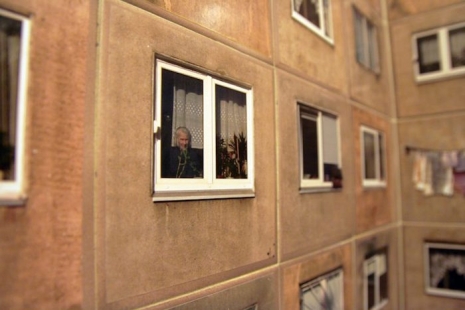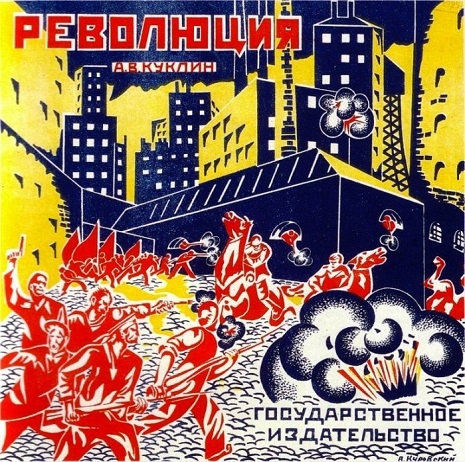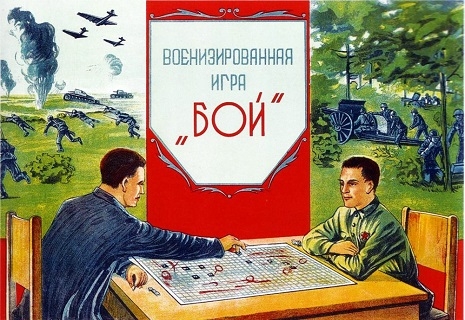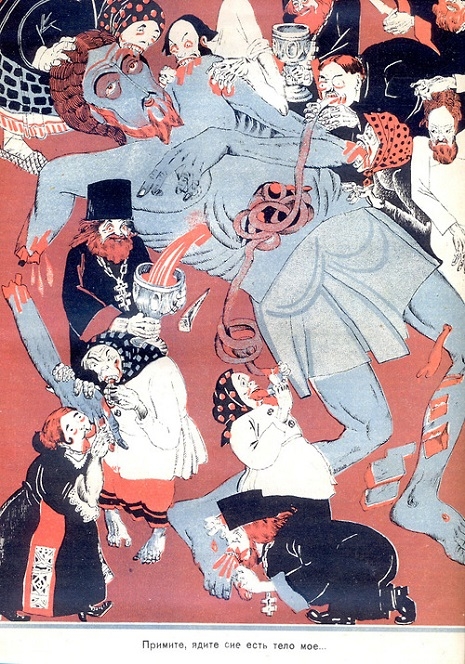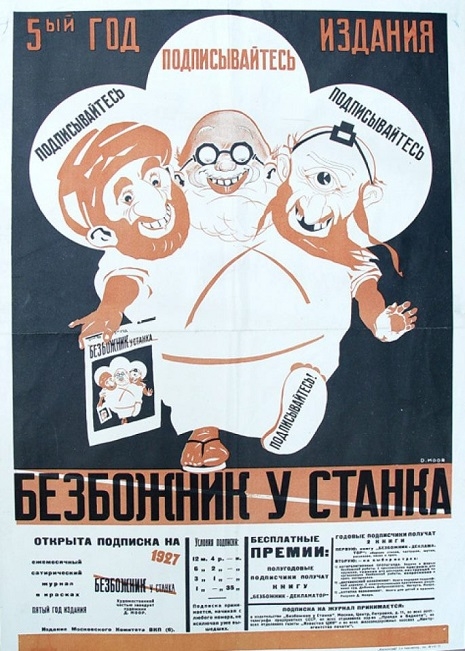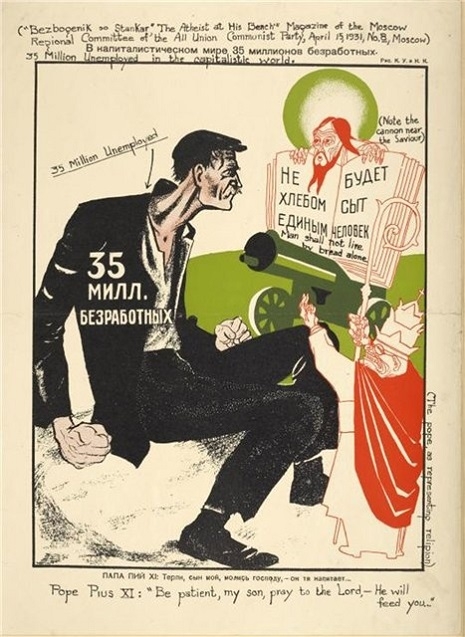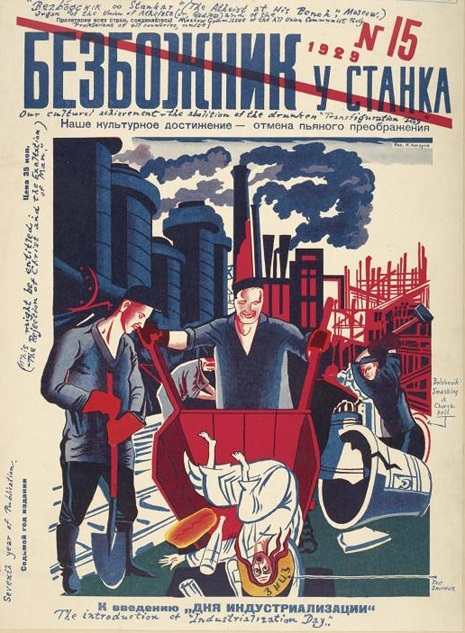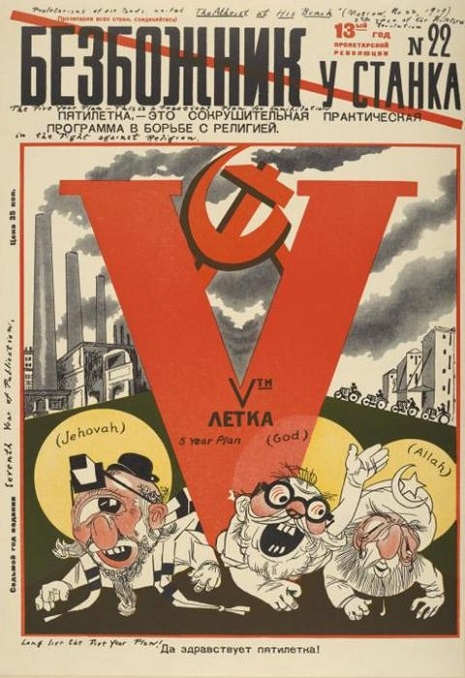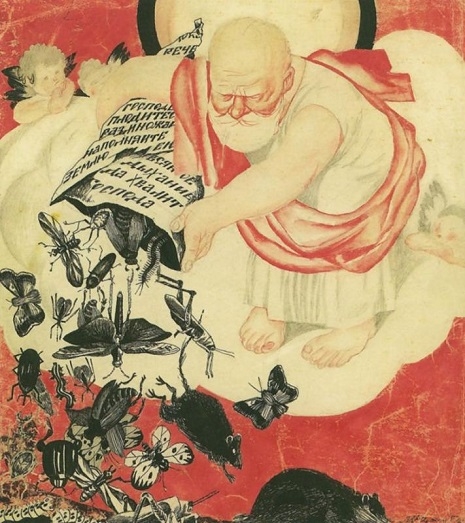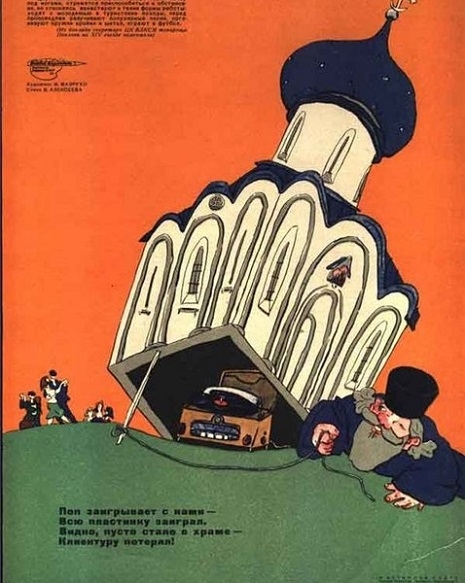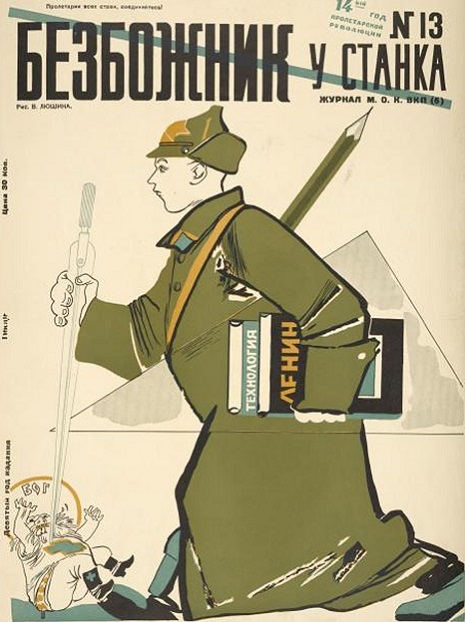
German movie poster for Aelita
I’m always annoyed at how difficult it is to convince someone to check out a silent film. Why is it like pulling teeth to get folks to experience some of the most dynamic, expressive, and yes, entertaining movies of all time? Case in point, Aelita: Queen of Mars, the first Soviet science fiction film and an absolutely captivating watch from beginning to end.
Based on a novel by Alexei Tolstoy (writer, Nazi apprehender, and distant relative of that other Tolstoy ),Aelita: Queen of Mars is set primarily in post-war Moscow and (you guessed it) Mars. After receiving a mysterious message from outer space, Soviet Engineer Los builds a spaceship. Cut to Mars, where the Emperor Tuskub maintains absolute power, and keeps the Martian proletariat in cold storage when not using their labor. His daughter Aelita has been watching Los through a telescope. She’s fascinated with Earthly ways of life and infatuated with Los, but she’s forbidden from using the telescope, as Tuskub is suspicious of her fascination with the aliens.
When Los comes home one day to catch his wife Natasha friendly with their tenant, a black market criminal, he shoots her in a fit of rage. Disillusioned with his marriage, he sets off for Mars in his ship, taking with him the dynamic revolutionary adventurer, Gusev, who just so happened to be hanging around. When they arrive they’re immediately thrown in prison, along with Aelita as a conspirator. I don’t want to give anything away, but let’s just remember that Soviets were really into revolutionary uprisings. There’s even a scene where a hammer and sickle are smithed, though it’s actually the hammer and sickle being smashed out of shape, shot in reverse for a primitive (but impressive) special effect.

The film boasted groundbreaking sets and costume designs.
The acting is beautiful and romantic, the plot is grandiose and ambitious, and visually, it’s completely epic. Far from two-dimensional propaganda, the film is complex and nuanced: Natasha and Los’ tenant actually acknowledges the shortages and rationing of the Soviet Union, which is probably why the film eventually fell out of favor with the Soviet government. I cannot recommend this movie enough, as I re-watch it every few months. It’s available on YouTube in its entirety, below.


